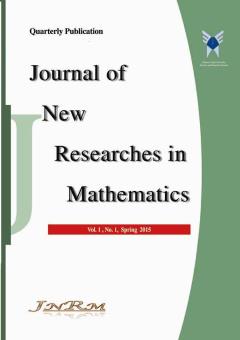Triangular matrix representation of skew Hurwitz series rings
Subject Areas : Algebra
Kamal Paykan
1
,
Abasalt Bodaghi
2
![]()
1 - Department of Basic Sciences, Garmsar Branch, Islamic Azad University, Garmsar, Iran
2 - Department of Mathematics, Garmsar Branch, Islamic Azad University, Garmsar, Iran
Keywords: نمایش ماتریس مثلثی کامل تعمیم یافته, بعد مثلثی, حلقه سری های هرویتس اریب, حلقه PWP,
Abstract :
. A ring R is a Baer ring if the right annihilator of every nonempty subset of R is generated by an idempotent. Moreover, R is called quasi-Baer if the right annihilator of every right ideal of R is generated as a right ideal by an idempotent. The piecewise prime ring (simply, PWP ring) is a quasi-Baer ring with finite triangulating dimension. Birkenmeier and Park raised the open problems to enlarge the class of ring extensions of PWP rings which are also PWP rings and to enlarge the class of ring extensions of rings with finite triangulating dimension which also have finite triangulating dimension. In this paper, we enlarge the class of ring extensions of PWP rings. In particular, we investigate the problem when a skew Hurwitz series ring (HR,α) has the same triangulating dimension as the ring R, where R is a ring equipped with an endomorphism α. Furthermore, for a piecewise prime ring we determine a large class of the skew Hurwitz series ring which have a generalized triangular matrix representation for which the diagonal rings are prime.
[1] G. F. Birkenmeier, Idempotents and completely semiprime ideals, Comm. Algebra 11 (1983), 567-580.
[2] G. F. Birkenmeier, H. E. Heatherly, J. Y. Kim, and J. K. Park, Triangular matrix representations, J. Algebra 230 (2000), 558-595.
[3] G.F. Birkenmeier, J.Y. Kim and J.K. Park, Principally quasi-Baer rings, Comm. Algebra 29 (2) (2001), 639-660.
[4] G.F. Birkenmeier and J.K. Park, Triangular matrix representations of ring extensions, J. Algebra 265 (2003), 457-477.
[5] S. U. Chase, A generalization of triangular matrices. Nagoya Math. J. 18 (1961), 13–25.
[6] W. E. Clark, Twisted matrix units semigroup algebras, Duke Math. J. (1967), 417-424.
[7] M. Fliess, Sur divers produits de series fonnelles, Bull. Soc. Math. France, 102 (1974), 181-19l.
[8] R. Gordon, L.W. Small, Piecewise domains, J. Algebra, 23 (1972), 553-564.
[9] E. Hashemi and A. Moussavi, Polynomial extensions of quasi-Baer rings, Acta Math. Hungar. 107 (3) (2005), 207-224.
[10] I. Kaplansky, Rings of operators, Benjamin New York, (1965).
[11] W. F. Keigher, Adjunctions and commands in differential algebra, Pacific J. Math. 248 (1975), 99-112.
[12] W. F. Keigher, On the ring of Hurwitz series, Comm. Algebra 25 (6) (1997), 1845-1859.
[13] W. F. Keigher and F. L. Pritchard, Hurwitz series as formal functions, J. Pure Appl. Algebra 146 (2000), 291-304.
[14] J. Krempa, Some examples of reduced rings, Algebra Colloq. 3 (4) (1996), 289-300.
[15] Z. K. Liu, R. Zhao, A generalization of PP-rings and p.q.-Baer rings. Glasg. Math. J. 48 (2) (2006), 217–229.
[16] K. Paykan, Principally quasi-Baer skew Hurwitz series rings, Boll. Unione Mat. Ital. 10 (4) (2017), 607-616.
[17] K. Paykan, A study on skew Hurwitz series rings. Ric. mat. 66(2) (2017), 383–393.
[18] Pollingher, P., Zaks, A., On Baer and quasi-Baer rings. Duke Math. J. 37 (1970) ,127–138.
[19] L. W. Small, Semihereditary rings. Bull. Amer. Math. Soc. 73 (1967), 656–658.
[20] E. T. Taft, Hurwitz invertibility of linearly recursive sequences, Congressum Numerantium, 73 (1990), 37-40


